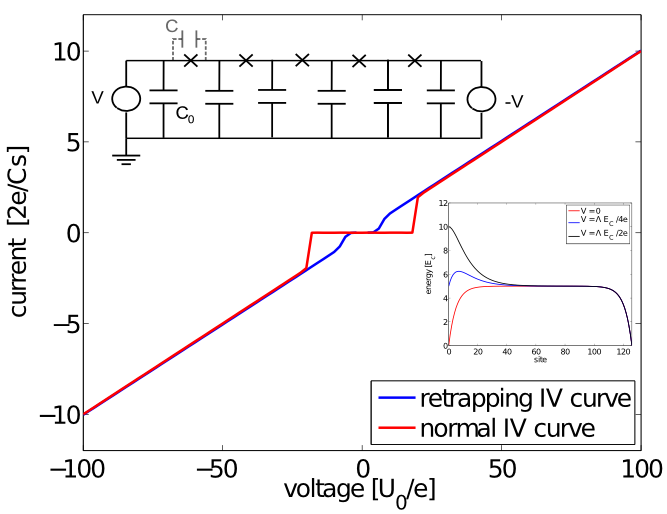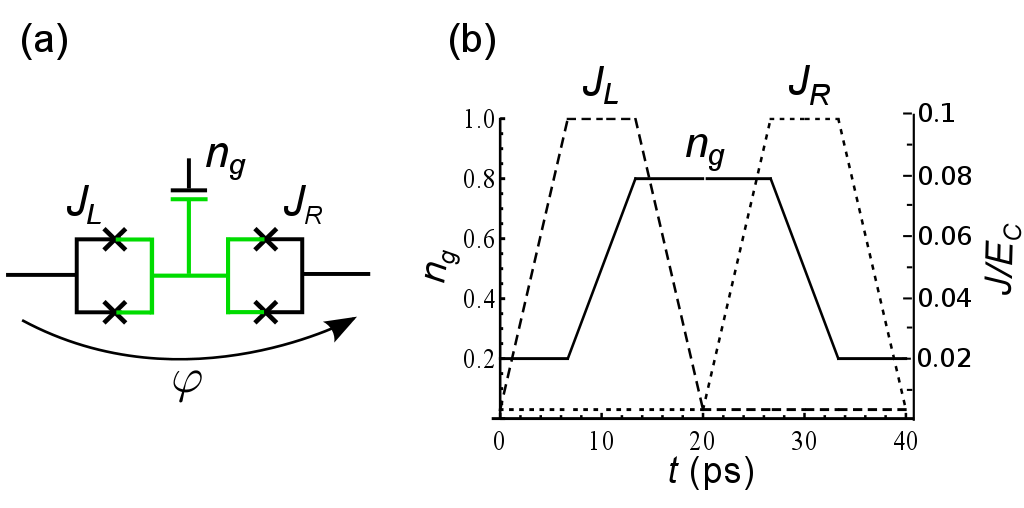A Cooper pair pump is a superconducting device, consisting of one or more islands, which are coupled to two leads via Josephson junctions or SQUIDs. Cooper pairs can be pumped through the devise by cyclic modulation of the Josephson couplings and/or the electrostatic potential of the islands. We investigate the influence of noise on the Cooper pair pumping. While zero temperature noise has no influence on adiabatic ground state pumping (it even stabilizes adiabaticity), finite temperature noise can excite the system and therefore can change the transferred charge per pumping cycle. We have developed [1] a master equation technique in the Floquet basis, which allowed us analyzing pumping in various regimes.
[1] I. Kamleitner, A. Shnirman, Time-dependent Markovian master equation for adiabatic systems and its application to Cooper-pair pumping, Phys. Rev. B 84, 235140 (2011).


